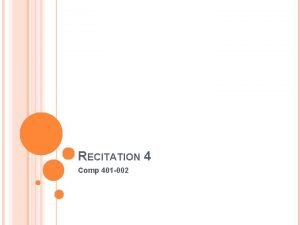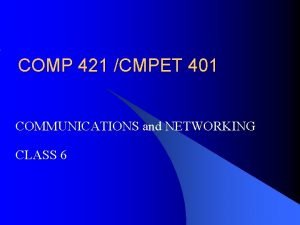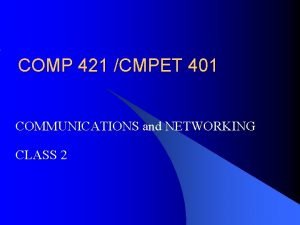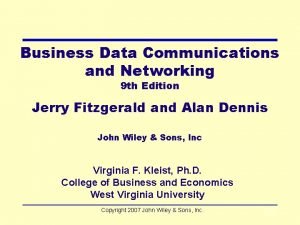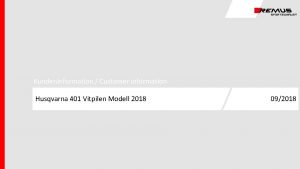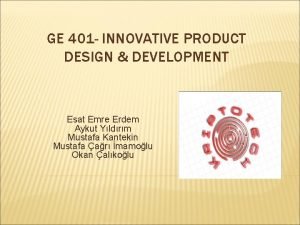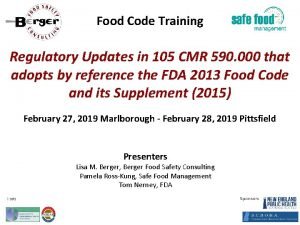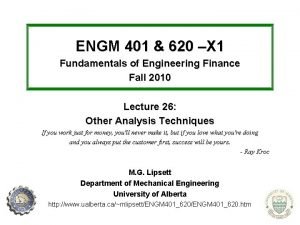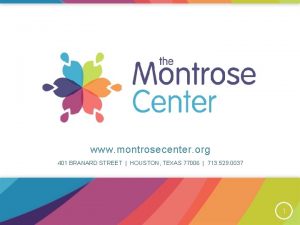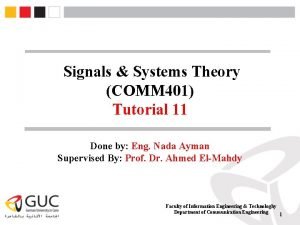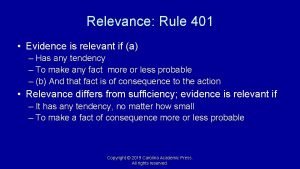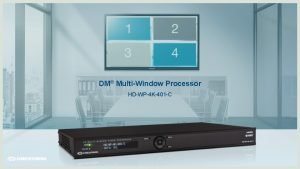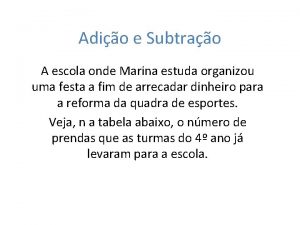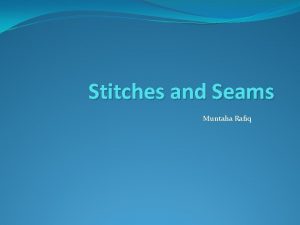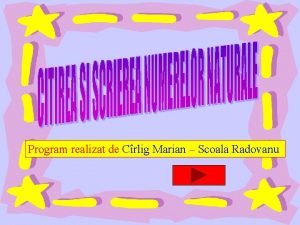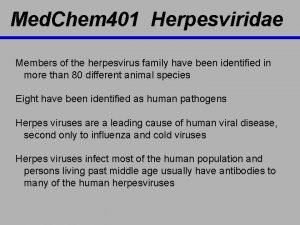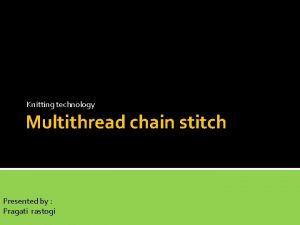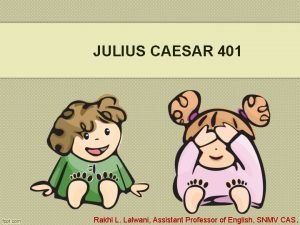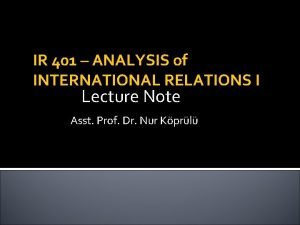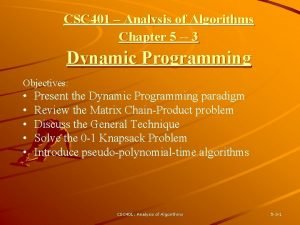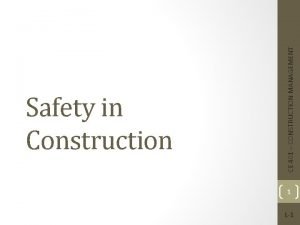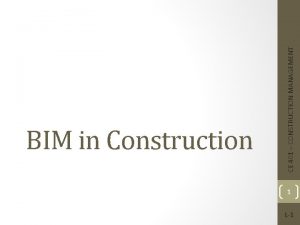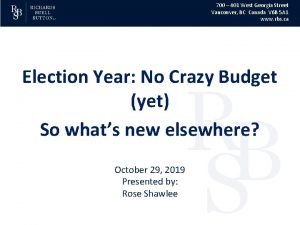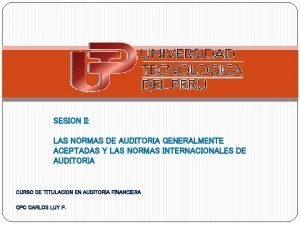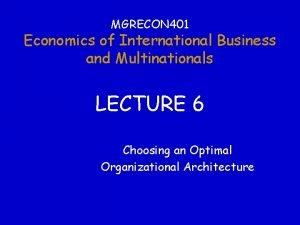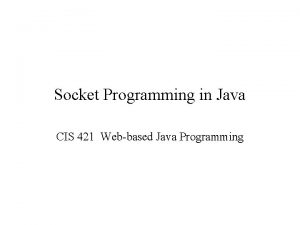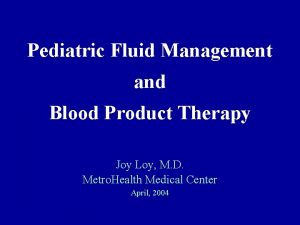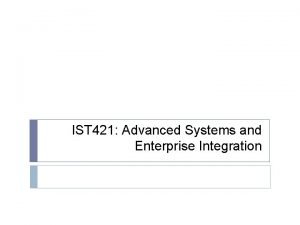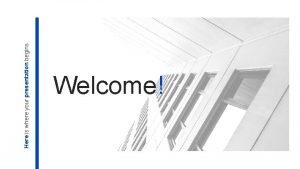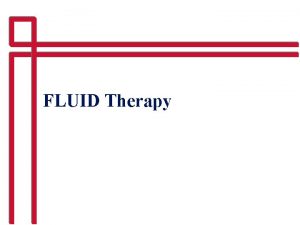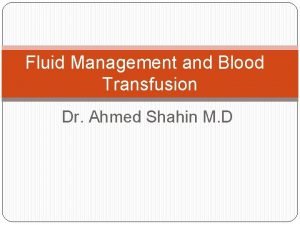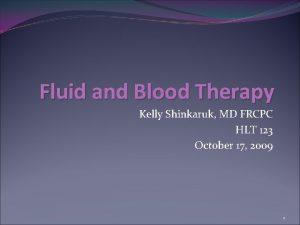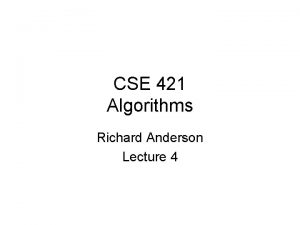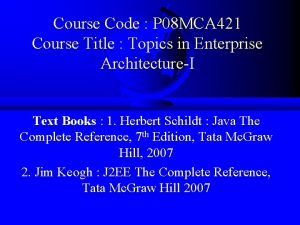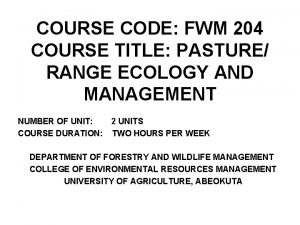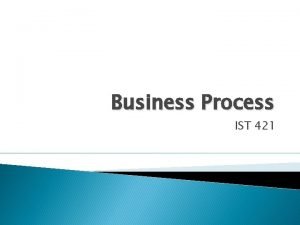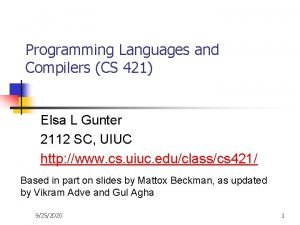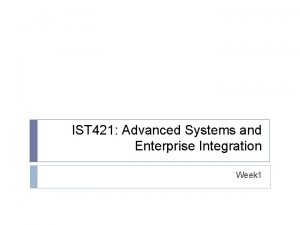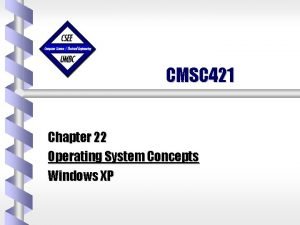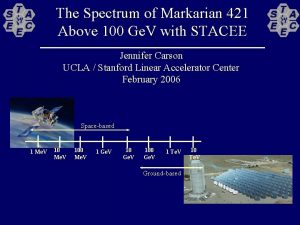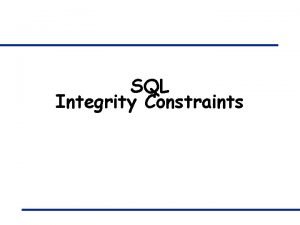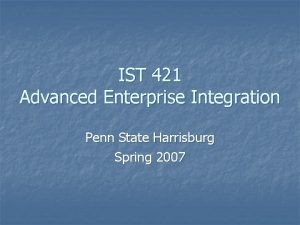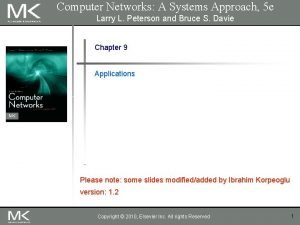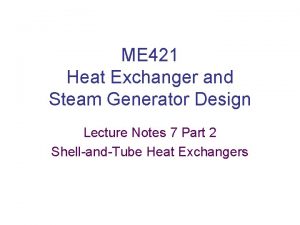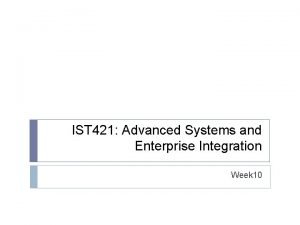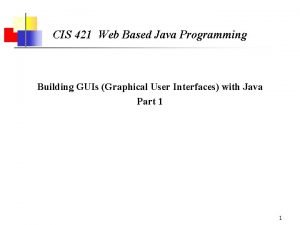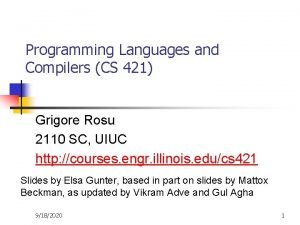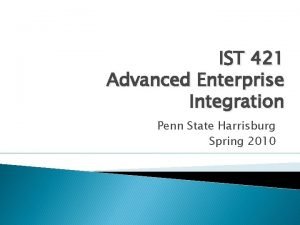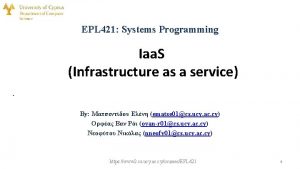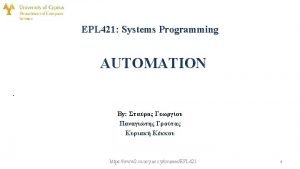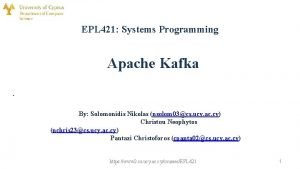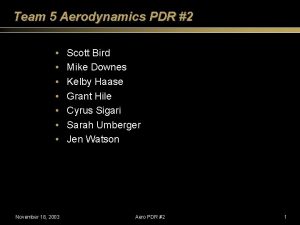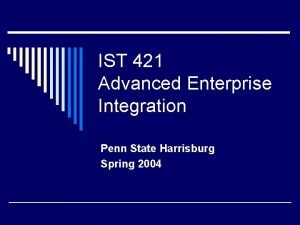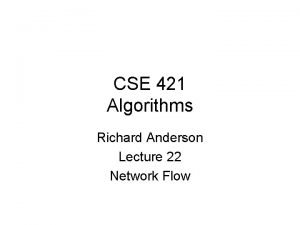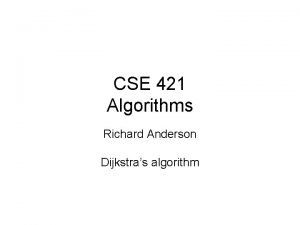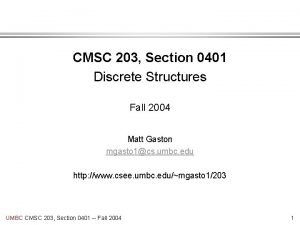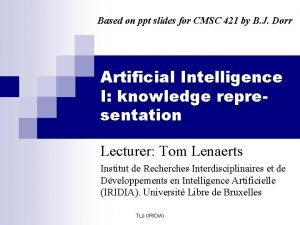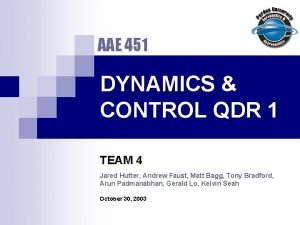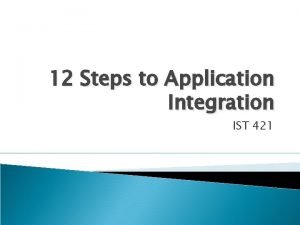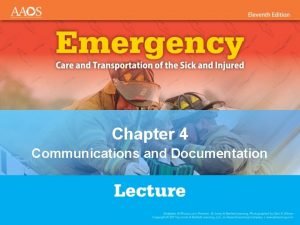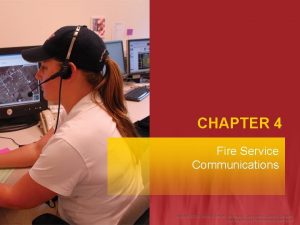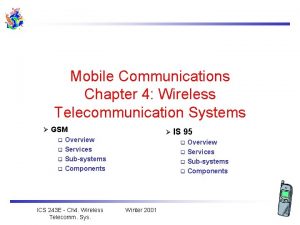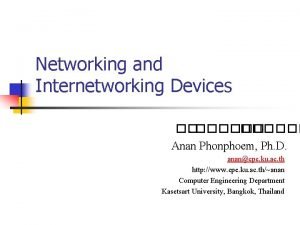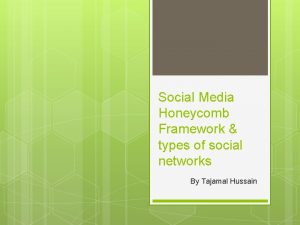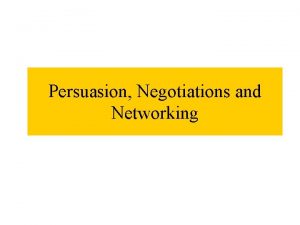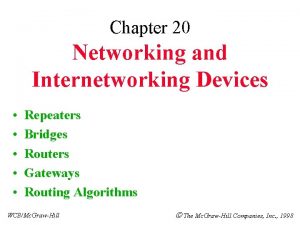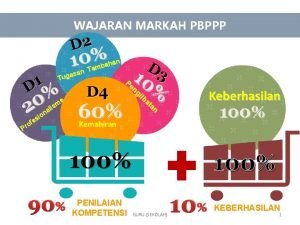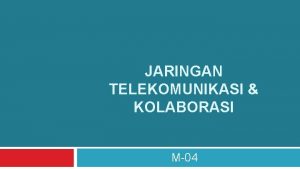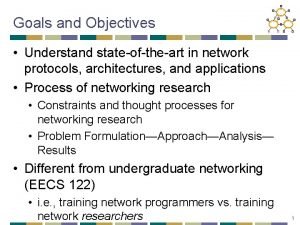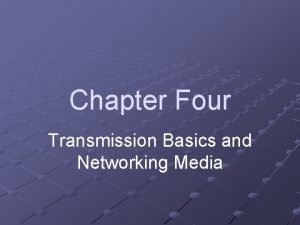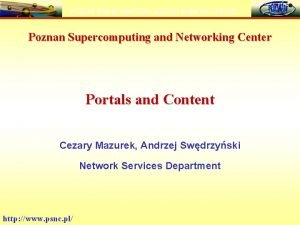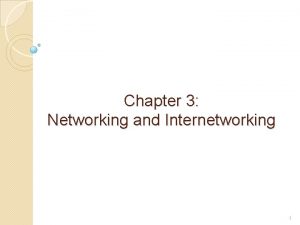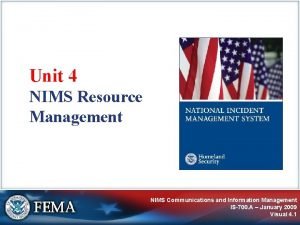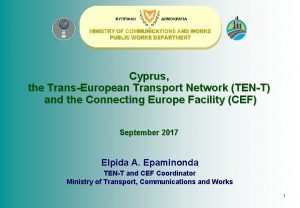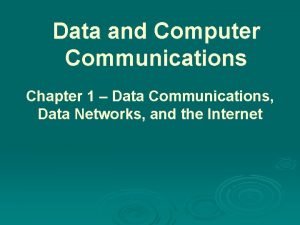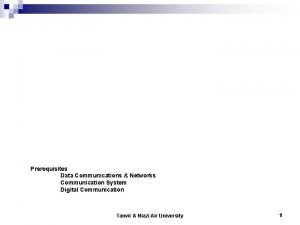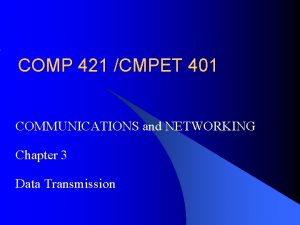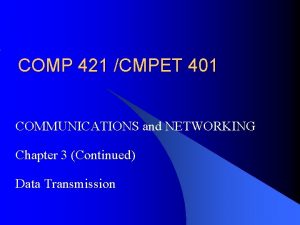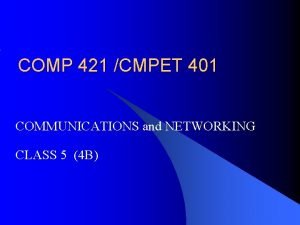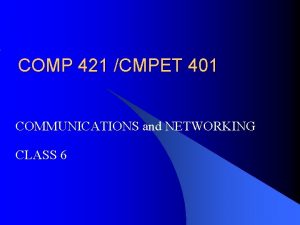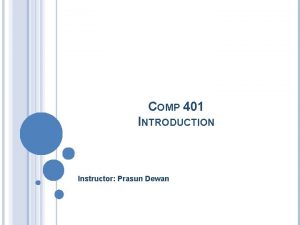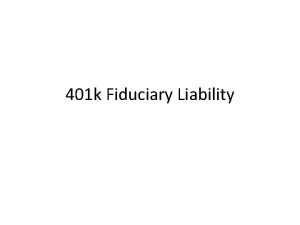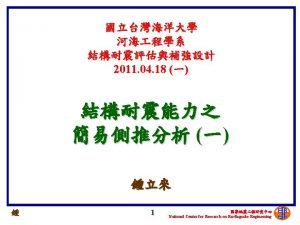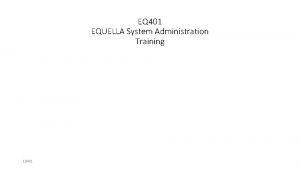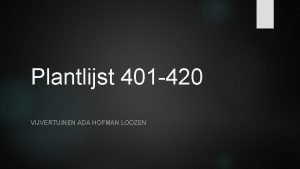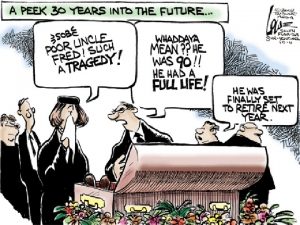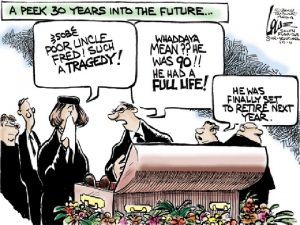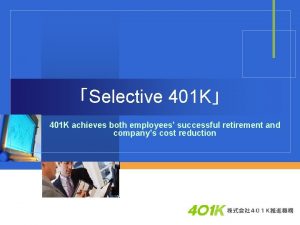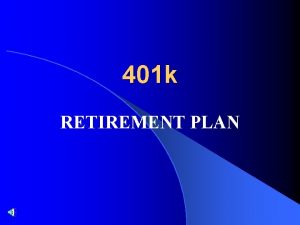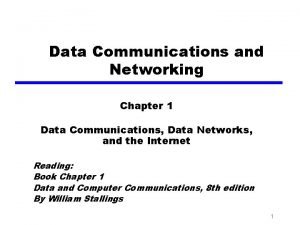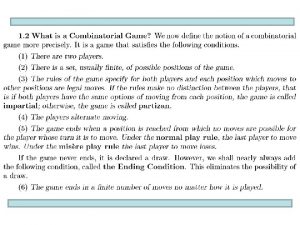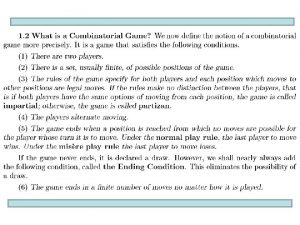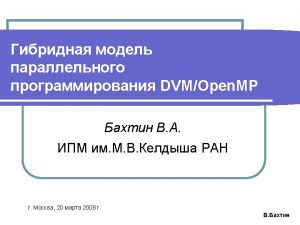COMP 421 CMPET 401 COMMUNICATIONS and NETWORKING Chapter






































































































- Slides: 102

COMP 421 /CMPET 401 COMMUNICATIONS and NETWORKING Chapter 3 (Continued) Data Transmission

History Although electricity has been known to exist for centuries, experiments into its friendly use did not begin until the 1700 s when scientists such as Volta, Ampere, and Watt explored ways to harness its potential. In the 19 th century, other scientists used electricity to invent the telegraph, telephone, and radio. With the advent of Marconi’s transoceanic wireless and the inauguration of radiotelegraph service, the 20 th century saw dramatic breakthroughs in communications technology. The world of telecommunications has since exploded to include such developments as television, communications satellites, lasers, and fiber optics. Each new invention, like all of its predecessors, relies on parts of the electromagnetic spectrum to carry information from origin to destination.

Global Network Hierarchy

Transmission Mediums

Bandwidth l Width of the spectrum of frequencies that can be transmitted – if spectrum=300 to 3400 Hz, bandwidth=3100 Hz Greater bandwidth leads to greater costs l Limited bandwidth leads to distortion l Analog measured in Hertz l Digital measured in baud or Bps l

Bandwidth The most common means for measuring path/circuit/channel size is describing the "range" (bandwidth) of radio frequency (RF) spectrum necessary to carry the information assigned to a particular path, channel, circuit, etc. The wider the path (the larger the bandwidth), the greater its capacity. Bandwidth is expressed in hertz (Hz) or cycles per second (CPS) of radio frequency. One Hz equals one CPS. The capacity of paths that carry digital data is usually expressed in kilobits or megabits per second (kbps/Mbps) as a more meaningful measure of data throughput capacity.

Analog and Digital Data Transmission l Data – Entities that convey meaning l Signals – Electric or electromagnetic representations of data l Transmission – Communication of data by propagation and processing of signals

Bit rate and Baud rate l Bit rate number of bits that are transmitted in a second l Baud rate number of line signal changes (variations) per second If a modem transmits 1 bit for every signal change bit rate = baud rate If a signal change represents 2 or more or n bits bit rate = baud rate *n

Switching is the means by which traffic is routed through a communications or system network. Switches may be manual (operator assisted) or automatic; they may serve local (in a city or on a military base) subscribers or perform area network (tandem [many switches connected to one another]) functions. An electrical path established between terminals, switches, and/or transmission systems is commonly referred to as a line, circuit, or channel. The "size" of the path is important in determining the full capability or capacity.

Switching Systems Electronic Switching Systems: A switch using solid-state switching devices and computer software that provides preprogrammed instructions to accomplish the switching of calls. Digital Switches: An electronic switching system that processes all signals to be switched into a digital mode. The circuit switch can also be used to route record and data traffic from a terminal to the nearest message switch for further processing. This dial-up, or hybrid, switching method uses the data adapter/RS-232 port feature of a digital telephone to accommodate a teletypewriter/data facsimile terminal connection to the circuit switch, which then routes the traffic forward as if it were a telephone call.

Switching Types There are three broad types of switches: circuit, message, and packet: Circuit switching - is the process of interconnecting a specific circuit to provide a direct connection between calling and called stations. For example, a local civilian telephone company interconnects telephone calls through its central office computerized circuit switch. Message switch = accepts a group of characters called a message, reads the message’s attached routing information, and stores it in computer memory. When a circuit path becomes available, the message is forwarded either to its destination or to another message switch closer to its destination. Message switches are called “store and forward” because they receive and store an entire message before sending it on its way. Packet switching - is a specialized technique of dividing messages into many standardized transmission blocks (packets), whereby the switching center does not store the packets, but routes them through a network independent of each other. At the destination, the packets are reassembled into the original message. Packet switching is an efficient and relatively inexpensive method to transfer data between local area networks.

Switching

Circuit Switches Circuit switches principally route voice telephone traffic, while message switches route the electrical form of hard copy messages. Message switches are further categorized as either store and forward or packet. A store and forward switch receives and electrically stores an entire message, retrieves it, determines where it should go, and routes it to its destination either directly or through another switch. Packet switches, which are especially adept at handling data, receive message segments (packets)

Circuit Switching Every time a telephone is used, a circuit switch routes the call. The switching center serves as the focal point for the interconnection of subscribers, via trunk circuits, to subscribers at other locations. In a circuit switched network, the calling party is connected to an end office (private branch exchange, or PBX) via a "subscriber loop. " When the caller lifts the handset, a signal sent to the end office indicates a request for service. The end office switch places a dial tone on the loop, which alerts the caller that the switch is prepared to accept his calling instructions. The caller issues instructions to the switch by dialing the digits of the subscriber being called. These digits appear as dial pulses in the case of a rotary dial or as multiple frequency tones (touch-tones) that represent discrete digits

Circuit Switching The switch interprets these digits as an indicator of the destination of the call, and, through preprogrammed instructions, logically and sequentially executes the actions to complete the call. Call processing is never a random process: it adheres to strict procedural rules established in the preprogrammed instructions. The following are typical circuit switches that may be used in a network. Electromechanical Switches: A long proved application whereby program control is executed by preset electrical/mechanical relays. Stored Program Control Switches: Sometimes a hybrid, where the switching is completed by electrical/mechanical relays under the direction of a computer-like stored program.

Message Switching A message switch is a central routing mechanism for teletypewriter and low-speed data information. The majority of switching networks in service employ the store and forward message switch technique. A switch simply receives and stores a message, retrieves and determines where it is addressed, and routes it to the next appropriate node. This process is particularly valuable in handling multi-addressed messages for near simultaneous delivery without the need for retransmissions. In military message switching networks, a precedence system provides expedited service for critical messages having a higher priority or urgency than the other messages. Message precedences from lowest to highest are routine, priority, immediate, and flash.

Packet Switching The packet switched network is used to route digital data traffic, including electronic mail (E-mail). In packet switched networks, the subscriber transmits the message to the switching center as a total message. The message is next divided into discrete packets and routed over any available transmission path to the next node. Each node of the packet switched network contains an internal processor that constantly surveys the traffic loads and conditions throughout the network. Upon receipt of the packets at the destination node, the switch reassembles the packets in sequence for delivery to the addressee.

Packet Switched message Flow

Packet Switching Packet switching requires highly structured protocols to maintain network status and control of the packets. The preamble to each packet must contain identification of the message. A normal schedule is to limit the message to approximately eight packets of 1000 bits per packet (125 -250 characters). The nodal points within a network do not store the messages except for the very brief time it takes to “packetize” the message and forward it through the network. Therefore, if an incomplete message is received by the addressee, the originator must retransmit the message. The packet switched network is designed to handle computer-tocomputer exchanges, interactive queries to a computer, and batch processing, as well as processing narrative traffic, such as Email. However, since this technology does not switch whole messages, it is an uneconomical method to use for multi-addressed traffic.

Modulation

Frequency Division Multiplexing The oldest form of multiplexing, FDM, divides a circuit into several smaller channels by frequency for simultaneous transmission. FDM, which is analog only, allows a user to cluster many terminals at a given location and share the same transmission path. Because the bandwidth can be divided into just so many parts, the number of terminals supported is limited. The speed or transmission rate of each channel is reduced due to narrower channel bandwidth. Thus, digital signals, such as data, must first be converted to analog.

FDM For example, when 12 individual 4 -k. Hz analog voice channels are fed to an FDM multiplexer (channel bank), each channel is assigned a frequency slot until all 12 channels are allocated. The channel bank output, a composite 48 -k. Hz analog signal, is sent to the receiver by some transmission path where the reverse process (demultiplexing) occurs, restoring the original 12 channels. FDM can be used for voice, teletypewriter, analog data, and facsimile.

Multiplexing

Time Division Multiplexing In TDM, a digital multiplexing scheme, each individual channel, called a subchannel, is allocated the entire transmission bandwidth for specific regular intervals or time slots. A time slot is allocated to each subchannel whether or not information is being transmitted. TDM is more flexible than FDM and allows the user to vary the number or duration of the time slots, depending on network requirements. In slightly more technical terms.

TDM allows simultaneous transmission of two or more signals by sampling each approximately 8000 times a second. Each channel sample is trans-formed into a pulse that is further coded to represent the incoming signal. The pulses from the channel sample are multiplexed in time. Each pulse is sequenced in a serial time slot of the output of the channel bank. TDM can accept various numbers of low-, medium-, or high-speed data channels directly and sequence them into a higher capacity data stream. TDM multiplexing is also referred to as pulse code modulation. Most FDM tactical multiplex equipment is rapidly being replaced by newer digital TDM equipment

Digital Multi-channel Characteristics

Terminals are the most recognizable communications components. A telephone, radio, facsimile, computer, television, and teletypewriter are all examples of terminals used to transmit (send) and receive information. Information, often called traffic, can take the form of voice, data, message, video, or other means. Traffic may be secure (encrypted/covered) or nonsecure (clear). Radios and telephones are the common terminals associated with voice communications. Facsimiles transmit and receive maps, photographs, sketches, and printed or handwritten text. Teletypewriters or printers attached to computers are used for messages and cables. This is often referred to as "record traffic" because the printer produces a "hard copy" record of what is received. Data terminals and computers transmit and receive binary data, while video terminals communicate imagery and sound.

Inter-Relationship of Terminals, Switches and Switching Facilities

Data Rate The speed of transmission of digital data is reflected as a "data rate. " As data rate increases, so does the bandwidth of the path, channel, or circuit carrying the data stream. . A single 4 -k. Hz-wide VF channel can also be subdivided by bandwidth to accommodate modes other than voice. For example, one VF channel can be multiplexed to commonly provide up to 16 teletypewriter (TTY) channels of about 200 Hz each.

Voice Circuits A typical voice conversation transmitted over a standard telephone line or circuit requires a radio frequency of sufficient bandwidth to handle the range of voice variations (called modulations) needed to convey information. This voice frequency (VF) range is approximately 3 -4 k. Hz wide (1000 hertz = k. Hz) and is the standard for defining a single channel or "narrowband" circuit. Circuits established between switches are called trunks. Trunks ride transmission systems that are normally equipped with a multi-channel capability and employ modems. They use various protocols (rules and codes) required for processing traffic in a switched network.

Duplex Circuits may be established to provide a one-way, one-way reversible, or simultaneous two-way traffic capability, depending upon user need and the availability of assets. The one-way reversible circuit is commonly referred to as "half duplex, " meaning that traffic can be passed in either direction but in only one direction at a time. A simultaneous two-way path is referred to as "full duplex"--traffic can be passed in either or both directions at the same time. The simple one-way-only path is often referred to as a "receive-only" or "transmit-only" circuit.

Modem A modem (a contraction of "modulator" and "demodulator") is a device that converts incoming and outgoing electronic signals from one form to another. For example, the digital output of a home computer may be fed to a modem that converts the digital bit stream (digital signal) into a series of audio tones (analog signals) transmitted over an analog-capable standard-grade public telephone circuit. The home computer modem may also convert an inbound analog signal from a telephone line to a digital signal that can be used by the computer. .

Analog and Digital Transmission Analog signals are represented as continuous wave-like (sine wave) signals, such as those electrical signals generated by a telephone keyed to a human voice. The analog signal varies by frequency in cycles per second, or hertz, to represent different voice sounds. Analog voice signals are transmitted over a channel in one of two ways: at their original frequency as a baseband signal or modulated onto another (carrier) signal and transmitted at the carrier frequency. Voice is transmitted in the audio frequency range of about 300 to 3400 Hz, or a voice signal bandwidth of 3100 Hz. Invariably, long-distance calls will be modulated to a higher frequency for transmission to achieve greater efficiency and lower cost.

Digital Signals By contrast, digital signals are discrete and consist of two possible states: the presence or absence of an electrical signal (on or off), or two different electrical signal levels. Communications between computers use a digital form, where information is conveyed as binary digits or bits (1 s or 0 s). For digital communications, the bandwidth describes the amount of data that can be transmitted on a channel over time in bits per second (bps). High-speed data networks might offer bandwidths of 10 to 50 Mbps, while telephone systems used for digital transmission offer a bandwidth of 1. 544 Mbps, the standard commercial T-1 carrier rates.

Digitization

Channel Capacity Voice lines used in conjunction with modems to transmit data typically offer speeds of 2. 4 and 19. 2 kbps, and wide data compression yielding asynchronous throughputs up to 76. 8 kbps. To conserve channel capacity, the multiplexing of many signals into one channel can be accomplished normally using FDM or TDM techniques. The FDM method requires that digital signals be converted into analog. This conversion of analog-to-digital (A/D) and digital-to-analog (D/A) is usually accomplished by a modem, which is often used to transmit digital data over a telephone (analog) network. A/D and D/A conversion; and it is incompatible with existing analog equipment.

Digitized Analog There is a bandwidth penalty for digitizing analog signals. For example, in a voice transmission, the bandwidth requirement increases 16 -fold, in comparison to music that is 20: 1 digital versus analog ratio. By converting signals from a digital telephone to analog prior to transmission, however, the output can be sent over a standard 4 k. Hz voice frequency circuit versus a wideband path.

Transmission Rate Vs. Information Rate In general, the greater the information rate (or resolution), the larger the transmission bandwidth. Required transmission bandwidth varies directly with desired information speed. A single voice conversation or teletype channel can easily be accommodated by a nominal 3 k. Hz-wide voice frequency channel. However, beyond voice, required bandwidth increases precipitously. Digital facsimile requires 7. 5 to 50 k. Hz, high-speed data more than 100 k. Hz, and full-motion video 4 MHz.

Information Rate In theory, information rate can equal but never exceed the transmission rate. In practice, the actual information rate measured in wpm or bps is almost always slower than the transmission rate, and is frequently significantly so. There are several reasons for this. Many times, information rate is dictated by the speed of the user’s terminal device, which may be much slower than the transmission “pipe. ” This will be the case with slow-speed teletypewriters and with the human voice.

Bits and Bytes A Bit is actually a contraction for the term "binary digit" and is the smallest unit of information used in data communications. It is represented by either a zero or a one. A Byte is a grouping of bits that may or may not be translatable to the user. Although the number of bits in a byte depends upon the type of communications equipment in use, eight is the most common. Bit rate is a measure of transmission and speed and is usually expressed in bits per second (bps); bit rates greater than 1000 are given in kbps, greater than one million in Mbps, etc. Baud (or sometimes Baud Rate) is the number of signal transitions period of time on the phone line. Bit and baud rates are typically the same at 300 bps, but baud rates are limited to 2400 (the approximate bandwidth of a phone line). It is possible to transmit about 2400 bps by coding/increasing the number of bits per baud (e. g. , 4800 bps can be transmitted at 2400 baud by encoding two bits per baud).

Comparing Transmission Rate to Information Rate

Transmission rates Many factors determine transmission and information rates. The transmission rate of a network or link includes the trunk speed in bits per second of the trunk and switching facilities or both. The information rate (traffic throughput), on the other hand, takes into consideration the entire path from one user terminal (A) to another (B), and reflects the speed at which the receive end can accept information from the transmit end as dictated by the slowest terminal in the loop. For example, if terminal A transmits data at 19. 2 kbps to terminal B, which can handle traffic input at only 4. 8 kbps, the resultant information rate is 4. 8 kbps. The difference is stored/buffered by the system to accommodate the lower rate of the receive terminal.

Factors Affecting Information Rate

Channel Capacity The capacity of a channel may be described as the maximum rate at which information can be sent over the channel without error. Bandwidth is the frequency range of a given electrical path or circuit. For data transmission purposes, channel capacity is measured in bps. The rate at which data may be transmitted is proportional to the channel bandwidth. Overall, data channel capacity is a function of volume, rate or speed, and the quality of the transmission path. These factors are important to the planner because they dictate how well any given transmission link can pass intelligence data from one point to another.

Relationship of Terminals to Bandwidth and Information Rate

Noise

Transmission Speeds

Transmission Speeds Different terminal types have various transmission speed requirements. Standard 4 -k. Hz narrowband telephone channels can handle data transmission speeds up to 9. 6 kbps. Data sent faster than 9. 6 kbps over these channels becomes unintelligible. Consequently, high-speed modems operating at speeds from over 9. 6 kbps to 56 kbps or higher will not work using this type of transmission channel.

Transmission Speeds The maximum data transmission speeds achieved over a given bandwidth are considerably lower than theoretical maximum. These speeds fall into the shaded area on the above graphic. The dotted lines are theoretical maximum speeds in the presence of noise, and are calculated for an error rate of one error bit in every 10, 000 bits transmitted. One way to increase the capacity of a channel is to raise the signal-to-noise ratio. While some types of noise can partially be controlled, the level of random noise is determined by natural phenomena, which are uncontrollable. There is a level below which noise cannot be suppressed.

Spectrum

Electromagnetic Spectrum From a planner’s viewpoint, usable radio frequencies extend from about 30 Hz to 300 gigahertz (300 billion hertz, or GHz). Research is being conducted to exploit even higher frequencies up to about 100 terahertz (100 trillion hertz, or THz) for laser applications. As a comparison, the typical human voice ranges in frequency from 80 -8000 Hz. The electromagnetic spectrum in its broadest context is a continuum of electromagnetic. energy traveling at the speed of light, 186, 000 miles per second. Within that spectrum are frequencies of less than one hertz to those easily exceeding 1000 THz, well beyond laser range. Each frequency has a discrete length of its radiated signal (wavelength). The frequency group from about 30 Hz to near 300 GHz is generally referred to as the radio frequency band. Electromagnetic energy within this band is referred to as radio frequency, radio waves, or radio for short.

RF Spectrum In another common frame of reference, the radio frequency spectrum is divided into discrete frequency bands. These bands are assigned unique designations (ELF, HF, SHF, etc. ) that correspond to a particular frequency range. (For example, the high frequency [HF] band includes frequencies from 3 million to 30 million hertz [expressed as megahertz, or MHz]. )

Frequency Each band or group of frequencies possesses different properties that affect useful signaling range, ability to carry information or "throughput, " physical attributes of supporting equipment, and resistance to natural phenomena and human-caused interference. Each frequency band or slice has its own peculiar capabilities and limitations, and each has its advantages and disadvantages. Frequency has a significant impact on antenna size. As frequency increases, wavelength decreases proportionally (f=1/W where "f" refers to frequency and "W" refers to wavelength). VLF is propagated by ground waves

Frequency Since the optimum length of a transmitter antenna equals one wavelength of transmitted frequency, the higher the frequency the shorter the antenna. While there are methods to electrically shorten and lengthen antennas, the optimum antenna is physically one wavelength long. For example, an ELF antenna of exactly one wavelength must be hundreds of miles long, whereas an ultra high frequency (UHF) radio antenna is only several inches in length.

Frequency A typical military battlefield tactical single channel radio transmits in the very high frequency (VHF), 30 to 300 MHz, segment of the radio spectrum. Radios using this particular spectrum slice can be lightweight, can use simple and relatively short wire antennas called "whips, “ and can easily be carried by a single soldier. On the other hand, a typical multi-channel satellite radio system in general use with the military transmits in the super high frequency (SHF) range. The demands of this part of the spectrum require a very complex and relatively bulky transmitter-antenna combination that is far too large for a infantryman to carry on his back.

Frequency In short, frequency determines how waves propagate. Three types of electromagnetic propagation are common: ground wave, sky wave, and free space propagation. At lower frequencies (ELF and VLF), radio ground waves travel great distances along the surface of the earth. Ground waves experience increasing loss (attenuation, or loss of signal strength) as frequency increases.

Frequency VLF is propagated by ground waves with little attenuation over thousands of kilometers. At higher frequencies, losses along the surface become so great the ground wave is limited to short distances, usually 50 kilometers or less. Sky waves occur at medium to high frequencies (MF and HF) where reflection from the ionosphere permits radio communication over great distances. At frequencies above 30 MHz (HF), ionospheric reflections are not dependable.

Frequency

Frequency Over an LOS path, transmission is much as through free space. Atmospheric interference, however, tends to degrade sky wave propagation. At EHF, for example, there may be wave attenuation (signal degradation) due to rainfall and absorption by dust and water vapor. Finally, as frequency increases, required transmitter output power decreases. To illustrate, normal output power for HF single channel over-the-horizon radios is between a few hundred and about 2000 watts (2000 W, or 2 k. W). In contrast, most single channel VHF systems operate at well under 100 W. Transmitter output power is important because it determines how much input power is required for the radio system to operate properly.

Frequency A 5 watt UHF radio will transmit and receive for many hours on small dry-cell batteries. An HF radio with a one kilowatt transmit power requires a relatively high amperage constant power source such as that delivered by tactical generators or commercial electric power. Another consideration for the planner regarding high output power is that the higher the power, the easier it is to find the transmitter using direction-finding (DF) techniques.

ELF Extremely Low Frequency (ELF) Range: The ELF frequency band is from 30 to 300 Hz and is characterized by ground wave propagation distances of more than 5000 miles. ELF amplitude modulated (AM) waves produce sound at high power and are able to penetrate vegetation and water to depths approaching 600 feet using broadcast codes. ELF communications systems require enormous transmit antennas covering thousands of acres and operate at a very high transmit power, often in the 100 megawatt (MW) range.

VLF Very Low Frequency (VLF) Range: The VLF frequency band covers 3 to 30 k. Hz. Like ELF, VLF transmissions can span distances of 5000 or more miles and, to a limited degree, can penetrate vegetation and water. As such, VLF is used principally for navigation and for low-speed secure TTY communications to shallowly submerged submarines. VLF transmitters are normally shore based; however, certain command control (C 2) aircraft may have a VLF capability. These aircraft use long trailing wire antennas and transmitter power ranges from 0. 5 to 2 megawatts. Throughput/Data Rates: VLF broadcast systems employ minimum shift keying (MSK) and operate four low-speed 50 -baud secure TTY channels. This equates to an information rate of about three characters every 12 seconds, although slightly higher data

LF Low Frequency (LF) Range: The LF frequency range is 30 to 300 k. Hz and can span distances of 1000 to 5000 miles. LF is used for medium- to long distance communications, particularly to submarines, surface ships, and, in some cases, aircraft. LF is also used for radio navigation such as LORAN C. LF is able to penetrate vegetation and sea water, but less effectively than ELF/VLF. Current shore-based LF systems use 50100 k. W transmitters and employ frequency shift keying (FSK) for single channel secure teletypewriter, or Morse code continuous wave (CW) operation for communications with ships at sea. Throughput/Data Rates: Using FSK with appropriate COMSEC equipment, LF can transmit in the secure TTY broadcast mode at 75 baud, which equates to an information rate of 100 words per minute (wpm). Receivers are mounted on surface ships, while submarines must maintain antennas near the surface to receive LF broadcasts.

MF Medium Frequency (MF) Range: The MF range spans 300 to 3000 k. Hz; it propagates by ground wave and sky wave. MF can span distances of 100 -1000 miles via ground wave and from 1000 to 3000 miles by sky wave, depending upon transmitter power and atmospheric conditions. Principal uses of the MF band include medium distance communications, radio navigation, and AM broadcasting. Throughput/Data Rates: Channel availability of MF is greater than for LF and lower bands. For example, the commercial AM broadcast band extends from 550 to 1600 k. Hz with a separation of 10 k. Hz between stations providing 105 audio channels. MF can support low-capacity multi-channel circuits for both voice and teletypewriter, the latter generally limited to 75 baud (100 wpm).

HF High Frequency (HF) Range: The HF frequency band covers 2 to 30 MHz. HF propagates by ground wave, typically from 30 to 50 miles, or by sky wave for distances greater than 1200 miles. There is usually a skip zone between ground wave and sky wave propagation. HF is widely used for long-distance communications, short wave broadcast, over-the-horizon (OTH) radar, and amateur radio. HF transmitter power can vary from 3 watts to over 100 k. W, depending upon the use and range intended. In the HF band, Throughput/Data Rates: HF can accommodate Morse code, voice, and FSK TTY modes of operation and can operate in the secure mode when using COMSEC devices. Smaller HF radio systems are capable of a single VF channel, which can support a single voice circuit or speech plus half-duplex TTY up to 75 baud. Larger HF systems can support up to four voice circuits, or typically a combination of three voice and one multiplexed circuit to generate up to 16 TTY circuits.

Altitude Extends the Range

VHF Very High Frequency (VHF) Range: The VHF band extends from 30 to 300 MHz. VHF signals are principally LOS and are useful to about 40 miles without being retransmitted. VHF usage includes short-range FM combat net radio, radio navigation, wideband LOS multi-channel systems, and television broadcasting. Depending upon use, range, and number of channels, VHF transmitter power ranges from 1/4 watt for a portable FM radio, to 120 watts for an FM multi-channel (12 -/24 -channel) LOS system. Although inherent LOS restrictions of terrain and antenna height limit single-hop VHF systems to 20 -40 miles per link, multiple repeaters or relay stations can increase link distance to several hundred miles. Throughput/Data Rates: VHF links can provide easily relocatable, reliable, and high-quality communications comparable to cable systems. VHF systems can be either analog or digital voice and data transmissions

UHF Ultra High Frequency (UHF) Range: The frequency band for UHF is from 300 to 3000 MHz. Principal methods of UHF propagation are LOS (air-to-air, air-to surface, or surface-to-surface), tropospheric scatter, and satellite. The UHF band provides great flexibility with transmission ranges varying significantly. LOS terrestrial systems can reach from 5 -100 miles depending on terrain. Aircraft LOS distance can be 300 miles. Troposcatter radio communication is possible between 80 and 1200 miles. And, depending on its altitude and antenna configuration, satellite range is thousands of miles. Transmitter output power is between 10 watts and 100 watts for LOS and satellite. Troposcatter systems require much higher output power levels to achieve the desired range and scatter effect. Throughput/Data Ranges: Widely used, with excellent quality and reliability, UHF systems operate at data rates of 2. 4 kbps and higher. Modern UHF LOS systems, for example, can function up to 600 kbps. UHF radios provide secure/non=secure voice, record, data, and facsimile service in both mobile and fixed configurations. Along with VHF, UHF is also used for television transmission.

SHF Super High Frequency (SHF) Range: The SHF band is from 3 to 30 GHz and is used principally for high data rate multi-channel LOS, troposcatter, and satellite systems. A portion of this band, the frequency range from about 1000 MHz to just above 1000 GHz, comprises the microwave region. LOS communications equipment operating in this frequency range is often referred to as microwave systems. Tropospheric scatter functions in the frequency range from 350 to 8000 MHz (8 GHz), covering most of the UHF band the lower SHF band. Nominal terrestrial coverage for SHF systems ranges from 40 miles for LOS microwave links to more than 300 miles for troposcatter communications. Throughput/Data Rates: SHF bandwidths are capable of handling high data rates of 1000+ kbps over several multiplexed channels. This feature is essential for LOS microwave radio relay systems that provide reliable, high-capacity, long-distance communications.

EHF Extremely High Frequency (EHF) Range: EHF frequencies span 30 to 300 GHz. Military operational use of the EHF band is still in its infancy. Research and development into this potentially rich communications band is ongoing. The recent launch of the first military EHF satellite, Milstar, initiates an up to six satellite constellation that will provide a global communications network well into the next century. Milstar will provide worldwide coverage using geosynchronous satellites. The geographic range of EHF satellite systems with cross-satellite linking is global. Development of high-capacity millimeter wave (MMW) radios, another application in this frequency range, continues. Millimeter wave radio is characteristically operated LOS and is limited to a theoretical planning range of no more than 40 miles. In a promising application for LOS tactical communications, the range of MMW radio could be held to less than 10 miles, making it very difficult to detect. EHF signals transiting the atmosphere are subject to attenuation by rain and other environmental conditions such as snow, fog, etc. Throughput/Data Rates: EHF systems will be capable of transmitting secure voice and high-speed data at rates of between 75 bps and 1. 544 Mbps, depending on single channel or multi-channel mode of operation. The extensivebandwidths available in the EHF band will permit many hundreds of channels per link. With antijam capabilities activated, however, throughput capacities will be reduced significantly.

Laser Range: Laser radiation can be produced in the spectral ranges from ultraviolet, through visible, to infrared radiation from 300 GHz to 100 THz. The radiation is easily focused. The laser beam’s high coherence makes it a useful tool for communicating information with privacy and security. Restricted to LOS, the transmitted beam can be locked on to the receiver; this allows communications to a mobile platform, such as a ship or aircraft. Due to larger bandwidth inherent in laser communications, other types of high-volume transmissions, including data and imagery, are also possible. Communicating by laser has some drawbacks, especially over long distances. Fog, mist, rain, and smog attenuate lasers and restrict useful range to a few hundred feet. Beam energy must be at low enough levels to prevent eye injury, another indirect limitation on the range of laser systems. Throughput/Data Rates: Because of the extremely wide bandwidth of laser radiation, up to 100 million discrete voice conversations can be carried simultaneously. The laser beam can be modulated by frequency, amplitude, phase, and polarization formats, using analog or digital transmission modes.

Line Impairments are faults in the line that occur due to either improper line terminations or equipment out of specifications. These cannot be conditioned out, but can be measured to determine the amount of the impairment

Crosstalk is when one line induces a signal into another line. In voice communications, we often hear this as another conversation going on in the background. In digital communication, this can cause severe disruption of the data transfer. Cross talk can be caused by the overlapping of bands in a multiplexed system, or by poor shielding of cables running close to one another. There are no specific communications standards that are applied to the measurement of crosstalk.

Echo or Signal Return All media have a preferred termination condition for perfect transfer of signal power. The signal arriving at the end of a transmission line should be fully absorbed, otherwise it will be reflected back down the line to the sender (and appear as an Echo). Echo Suppressors are often fitted to transmission lines to reduce this effect.

Echo or Signal Return (2) Usually during data transmission, these suppressors must be disabled or they will prevent return communication in full duplex mode. Echo suppressors are disabled on the phone line if they hear carrier for 400 ms or more. If the carrier is absent for 100 m. Sec, the echo suppressor is re-enabled. Echo Cancellers are currently used in Modems to replicate the echo path response. These cancellers then combine the results to eliminate the echo (thus, no signal interruption is necessary).

Frequency Shift Frequency shift is the difference between the transmitted frequency and the received frequency. This is caused by the lack of synchronization of the carrier oscillators.

Nonlinear Distortion Nonlinear distortion changes the wave shape of the signal. If the signal was transmitted as a sine wave (and arrived as a square wave), it would be an example of severe nonlinear distortion. Amplitude modulated carriers would suffer drastically if the original wave shape was distorted.

Jitter: Amplitude and Phase Here are the 2 types of Jitter: a. Amplitude Jitter b. Phase Jitter Amplitude Jitter is the small constantly changing swing in the amplitude of a signal. It is principally caused by power supply noise (60 Hz) and ringing tone (20 Hz) on the signal.

Jitter: Amplitude and Phase Jitter is the small constantly changing swing in the phase of a signal. It may result in the pulses moving into time slots that are allocated to other data pulses (when used with Time Domain Multiplexing). Telephone company standards call for no more than 10 degrees between 20 and 300 Hz and no more than 15 degrees between 4 and 20 Hz.

Transients: Impulse Noise, Gain Hits, Dropouts & Phase Hits Transients are irregular-timed impairments. They appear randomly, and are very difficult to troubleshoot. There are 4 basic types of Transients. i. Impulse Noise ii. Gain Hits iii. Dropouts iv. Phase Hits

Impulse Noise Impulse noise is a sharp and quick spike on the signal that can come from many sources: electromagnetic interference, lightning, sudden power switching, electromechanical switching, etc. . These appear on the telephone line as clicks and pops: they're not a problem for voice communication, but can appear as a loss of data (or even as wrong data bits) during data transfers. Impulse noise has a duration of less than 1 m. Sec and their effect is dissipated within 4 m. Sec.

Gain Hits are sudden increases in amplitude that last more than 4 m. Sec. Telephone company standards allow for no more than 8 gain hits in any 15 minute interval. A gain hit would be heard on a voice conversation as if the volume were turned up for just an instance. Amplitude modulated carriers are particularly sensitive to Gain Hits.

Dropouts are sudden losses of signal amplitude that are greater than 12 db, and last longer than 4 m. Sec. They cause more errors than any other type of transients. Telephone company standards allow no more than 1 dropout for every 30 minute interval. Dropouts can be heard on a voice conversation (similar to call waiting), where the line goes dead for a 1/2 second. This is a sufficient loss of signal for some digital transfer protocols (such as SLIP), where the connection is lost and would then have to be re-established.

Phase Hits are either a sudden--and large--change in the received signal phase (20 degrees), or a frequency that lasts longer than 4 m. Sec. Phase Hits generally occur when switching between Telcos, common carriers, or transmitters. FSK and PSK are particularly sensitive to Phase Hits. The data may be incorrect until the out-ofphase condition is rectified. The telephone company standard allows no more than 8 phase hits in any 15 minute period.

The Telephone Company

The Telephone Network The telephone network consists of your phone at home that is connected (by the Local Loop) to the Central Office. The Central Office is in turn connected to a Hierarchical Phone Network. Worldwide, there are over 300 million (300, 000) telephones - 98% of them interconnected. POTS - Plain Old Telephone Set The POTS, or Plain Old Telephone Set, consists of these 5 sections: i. Ringer Unit ii. Hook Switch iii. Dialer Unit iv. Hybrid/Speech Network v. Hand Set

POTS The connection to the CO (Central Office) comprises only 2 wires: Tip and Ring. This connection is called the "Local Loop. "

The Local Loop

Tip & Ring The Tip is +ve and colored green. The Ring is -ve and colored Red. If you look at a phone jack in your house, you will see that it is wired for 4 wires: Red, Green, Black and Yellow. However, black and yellow are not normally used. The black and yellow wires can be used for a second telephone line or they can be used for running a Network Physical layer protocol called Phonenet (by Farralon). Phonenet uses the black and yellow for Network communications. It is for use with Appletalk, and is a replacement for Localtalk. It runs at the Localtalk speed of 230 Kbps, reasonable for small networks.

Ringer Unit The ringer is a device that alerts you to an incoming call: it interprets the ringing voltage from the Central Office. Originally, the ringer was a electromagnetic bell. Today, though, most ringers are electronic devices. The Central Office sends the following: • a 90 to 120 VAC ringing voltage • Frequency of 20 Hz • Cadence for North America is 2 sec On/ 4 sec Off

The Hook Switch The hook switch is activated by lifting the handset off of the cradle. The position of the hook switch determines whether the telephone is waiting for a call, or is actively using the line. The off-hook position informs the network of a request for use. The on-hook position releases the use of the network.

The Dialer Unit There are two types of Dialer Units: Rotary and Touch Tone. Rotary is the old "put your finger in the hole and spin" type. The rotary dial operates by toggling the Hook Switch on and off. Touch Tone is the modern method where 2 frequencies per push button are sent. Touch Tone is a trade name; the correct name is DTMF (Dual Tone Multi Frequency).

Hybrid/Speech Network The Hybrid/Speech Network performs these functions: • It converts the Tx/Rx 4 wires from the Handset to the 2 wires for the Local Loop. • It interfaces the signals from the Dialer Unit to the telephone line. • It provides auto line compensation for line length to keep the volume constant.

The Handset contains transducers that convert mechanical energy into electrical energy. The microphone converts speech into electrical energy while the diaphragm (or speaker) converts electrical signals into audible signals. Functions of a Telephone Set are shown below. i. Request use of network from the CO (Central Office). ii. Inform you of the network status: Dial-tone, Ringing, Busy, Fast Busy (Talk Mail) iii. Informs CO of desired number. iv. Informs you when a call is incoming (phone rings). v. Releases use of network when call is complete (hang-up) vi. Transmit speech on network & receives speech from distant caller. vii. Adjust power levels and compensates for line length

Local Loops The Local Loop is the connection between the Central Office and the home or business. Two wires (1 pair) are run into every home. The pair does not go directly to the Central Office. Instead, it goes to those big green boxes--that you see on the street corners--called "Serving Area Interfaces" (SIA). Large multi-conductor bundles of wires then go from there to the Central Office.

The Central Office

The Central Office (2) The Central Office provides the following functions: i. It supplies the battery voltage for the telephone system. The On-hook voltage is 48 Vdc +/- 2 V. Off-hook voltage is -6. 5 Vdc. ii. It supplies the Ringing Generator - 90 to 120 VAC, 20 Hz, 2 sec on/ 4 sec off iii. It supplies the Busy signal (480 + 620 Hz, 0. 5 sec On/ 0. 5 sec Off), Dial Tone (350 + 440 Hz) and Fast Busy (480 + 620 Hz, 0. 2 sec On/ 0. 3 sec Off). iv. It has the digital switching gear that determines if the number is an Interoffice call (local) or an Intraoffice call (Toll - long distance).

Central Office (3) A Central Office can have up to 10, 000 subscribers (for example, 284 -0000 to 284 -9999). Most have 4, 000 to 5, 000 subscribers. The Central Office bases the loading requirements on roughly 10% of the phones that will be in use at any one time. However, the use of Internet dialup access has drastically changed this statistic

Hierarchical Phone Networks The PSTN (Public Switch Telephone Network) is divided into a hierarchical network. Here are the 5 classes of switching centers in North America: Center Class Description Abbreviation 1 Regional Center RC 2 Sectional Center SC 3 Primary Center PC 4 Toll Center TC 4 b Toll Point TP 5 Central Office CO Symbol

An Example

Hierarchical Structure The Hierarchical portion is seen as follows: Trunk Long distance telephone cable Toll Trunk Connects CO (Central Office) to TC (Toll Center) Everything above TC (Toll Center) and TC to TC Between CO (Central Office) Intertoll Trunk Interoffice Trunk Intraoffice Trunk Call between 2 subscribers within the same CO (284 -7079 to 284 -8181

Call Routing Call routing: 1. Preferred route 2. Second choice 3. Third Choice Call routing is determined by network engineering and physical location. When all lines are idle, the call routing selects the preferred route. If the preferred route is busy, then the call is routed to the second choice. Because the second choice is routed through one toll center, the charge for the call is greater than the preferred route. The third choice is used when the second choice is busy. The third choice goes through 2 toll centers, and is the most expensive route
 Comp 401
Comp 401 Comp 421
Comp 421 Comp 421
Comp 421 Business data communications and networking
Business data communications and networking Business data communication and networking
Business data communication and networking Introduction to data communications and networking
Introduction to data communications and networking Business data communications and networking
Business data communications and networking Traditional network vs sdn
Traditional network vs sdn Cs 421 uiuc
Cs 421 uiuc Cs 421 programming languages and compilers
Cs 421 programming languages and compilers Lsp401
Lsp401 Svartpilen 401 dyno
Svartpilen 401 dyno Cse 401
Cse 401 Ge 401
Ge 401 Where should charts with food code 3-401 be displayed texas
Where should charts with food code 3-401 be displayed texas Eng m 401
Eng m 401 Clase 401
Clase 401 401 branard street houston tx
401 branard street houston tx Bmb 401
Bmb 401 Comm 401
Comm 401 401 relevance
401 relevance Hinário adventista 401
Hinário adventista 401 Hd-wp-4k-401-c
Hd-wp-4k-401-c Quantas prendas as três turmas levaram na primeira semana
Quantas prendas as três turmas levaram na primeira semana Stitch type 401
Stitch type 401 Scoala radovanu
Scoala radovanu Herpesviridae
Herpesviridae Multi thread chain stitch
Multi thread chain stitch Jul 401 english
Jul 401 english Ir 401
Ir 401 Textured polyester film
Textured polyester film Faa p-401
Faa p-401 Csc 401
Csc 401 401 group
401 group Ce-401
Ce-401 Ce-401
Ce-401 401 west georgia
401 west georgia Nia 401
Nia 401 Bp 401
Bp 401 421 could not create socket
421 could not create socket Pediatric fluids 4 2 1
Pediatric fluids 4 2 1 Ist 421
Ist 421 Here is where your presentation begins
Here is where your presentation begins 421 rule
421 rule Body fluid compartments
Body fluid compartments 4-2-1 rule
4-2-1 rule Uw cse 421
Uw cse 421 Fwm 421
Fwm 421 Fwm 421
Fwm 421 Business process integration definition
Business process integration definition Cs 421 uiuc
Cs 421 uiuc Ist 421
Ist 421 Cmsc 421
Cmsc 421 Markarian 421 transmission
Markarian 421 transmission Biba n 421 ddl
Biba n 421 ddl Ist 421
Ist 421 Bilkent cs421
Bilkent cs421 Single pass heat exchanger
Single pass heat exchanger Bell delaware method
Bell delaware method Advanced systems integration
Advanced systems integration Jrootpane
Jrootpane Psy
Psy Cs 421 uiuc
Cs 421 uiuc Ist 421
Ist 421 Epl421
Epl421 Epl 421
Epl 421 Epl421
Epl421 Aae 421
Aae 421 Ist 421
Ist 421 Cse 421
Cse 421 Cse 421
Cse 421 Cmsc 203 umbc
Cmsc 203 umbc Cmsc421
Cmsc421 Aae 421
Aae 421 Ist 421
Ist 421 Chapter 4 communications and documentation quiz
Chapter 4 communications and documentation quiz Chapter 3 network protocols and communications
Chapter 3 network protocols and communications Chapter 4 fire service communications answers
Chapter 4 fire service communications answers Communications chapter
Communications chapter Networking and internetworking devices
Networking and internetworking devices Honeycomb framework of social media
Honeycomb framework of social media Persuasion and networking
Persuasion and networking Speed networking advantages and disadvantages
Speed networking advantages and disadvantages Ictii
Ictii Data communication and networking assignment questions
Data communication and networking assignment questions Networking and internetworking devices
Networking and internetworking devices Wajaran markah pbppp
Wajaran markah pbppp Networking and collaboration
Networking and collaboration Goals of network layer
Goals of network layer Analog and digital signals in computer networking
Analog and digital signals in computer networking Transmission basics and networking media
Transmission basics and networking media Poznan supercomputing and networking center
Poznan supercomputing and networking center Internetworking basics
Internetworking basics Error detection and correction in networking
Error detection and correction in networking Optical switching and networking
Optical switching and networking Track and report nims
Track and report nims Telecommunication meaning
Telecommunication meaning Ministry of communications and works cyprus
Ministry of communications and works cyprus Global marketing communications
Global marketing communications Data and computer communications 10th edition
Data and computer communications 10th edition Data & computer communications
Data & computer communications Amplified expressiveness
Amplified expressiveness Digital communications and networks
Digital communications and networks
